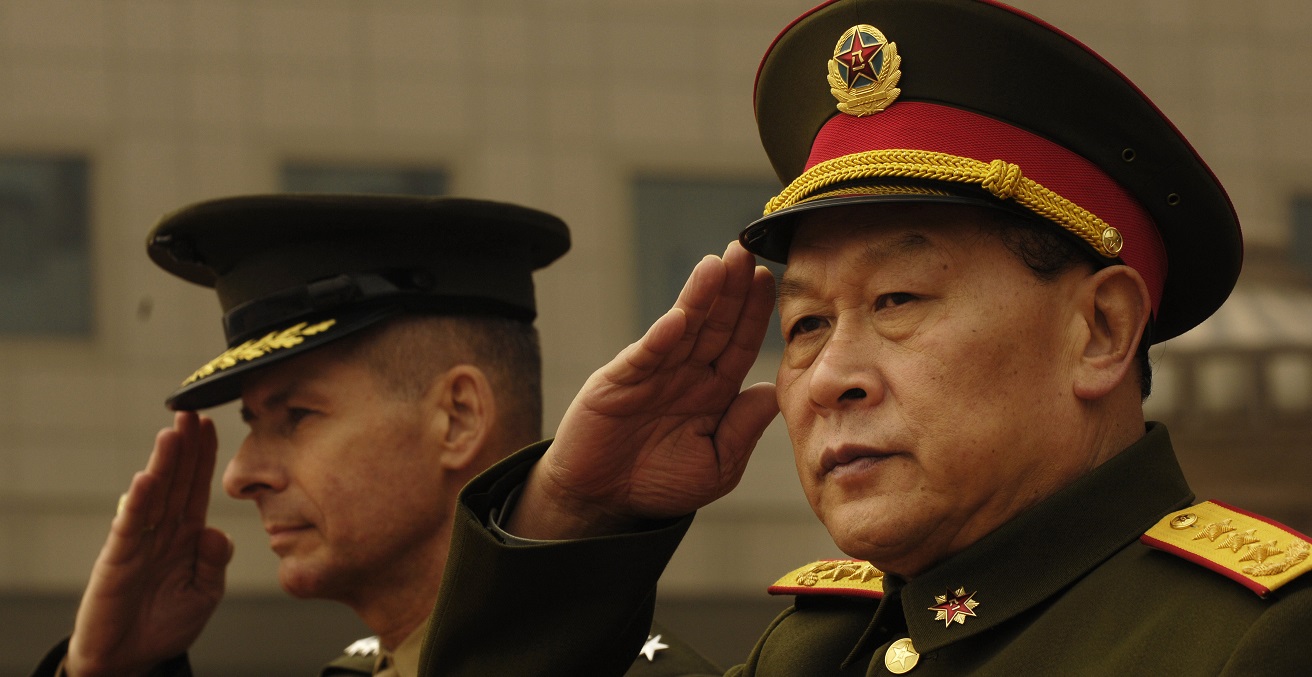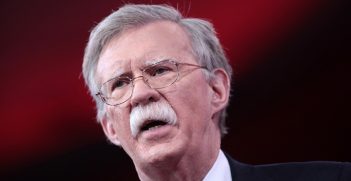Australia in the New Asia: Without America

For a long time, Australia benefitted from the United States’ uncontested dominance in Asia. However, the dynamics of the region have changed much faster than anyone expected.
In 2010, I wrote a Quarterly Essay called Power Shift (also available in the Australian Journal of International Affairs), which argued that America would not be able to maintain the uncontested regional primacy which it had exercised in Asia for so long. China’s growing wealth and power, and its ambition to regain the position and status of a great power in Asia, meant that it was bound to challenge America’s primacy, and that challenge would be too strong to be simply deflected.
America therefore faced a choice between three broad options: it could confront China in an escalating strategic rivalry that would carry big costs and real risk of conflict; it could withdraw strategically from Asia and leave China to dominate the region; or it could strike some kind of deal with China to share power in Asia as equal great powers.
Many people criticised that analysis, both in Canberra and in Washington. They argued that China was not, and would not become, either powerful enough or determined enough to challenge American primacy in Asia, so there was no need to offer the kind of accommodation I had proposed.
It turns out that my critics and I were both wrong. We all overestimated America‘s power and resolve and underestimated China’s. They didn’t see how far and fast China’s power and resolve would grow. I didn’t see how weak America’s response would be, and how quickly its resolve would collapse. They turned out to be quite wrong that America could contain and deter China’s challenge at little cost or risk. I turned out to be wrong that America would have the skill and resolve to negotiate and sustain the kind of power-sharing deal I had proposed. So now we face a new situation, which none of us clearly foresaw. Today, America and China are locked in a contest for leadership in East Asia, which China is plainly winning. The most likely outcome is that America will withdraw, leaving China as the predominant regional power.
All this has huge implications for Australia. As America’s strategic leadership in Asia is replaced by China’s, Australia’s alliance with the US will fade away. Australia will find itself, for the first time since European settlement, facing an Asia without the backing, support and protection of a major Anglo-Saxon ally. Australia will be, more than ever before, on its own, and the task is to recognise and adapt to that. It is a huge challenge and so far Australia has hardly begun to address it.
The military dimension
This is not however the first time Australia has faced the prospect that a rising Asian power would successfully challenge its great and powerful friends and force them to withdraw from Asia, leaving it unprotected at the mercy of the new Asian hegemon. There have been apparently similar situations several times in Australia’s history: in 1914, in the late 1930s, in the late 1960s and in the early 1990s. Each time the danger passed. But this time is different.
There are many dimensions to this contest, but it is worth focusing especially on the military dimension, because this is where people most often wrongly assume America’s advantage is greatest, and yet it is where the ultimate potential costs to America of rivalry with China in Asia are highest. To see why, it’s necessary to recognise that the US-China contest in Asia today is pure power politics of the old school, in which armed force plays a central role. That is not because war is in any way inevitable, as the ‘Thucydides Trap’ folk would have us believe: countries can always choose to avoid war by withdrawal or compromise. But when states, especially great powers, compete to establish their relative positions in an international system the outcome is determined above all by the extent to which the contestants can convince one another they are willing to go to war to achieve their objectives.
In Asia over coming years that means the future leadership roles of America and China will depend on the issues that each can convince the other it is willing to go to war over. In the past the weight has all been on the US side, but now it is shifting fast China’s way. China has used the situations in the South and East China seas to show that it is more willing to risk a confrontation with America than vice versa, and more confident that America will back off from a confrontation if it occurs to avoid a conflict. And there is good reason for that: why would America risk the costs and risks of an escalating conflict with China—especially the possibility of a nuclear conflict—to preserve its leadership in Asia, when China’s stake is obviously so much higher? The boilerplate phrases of US official speeches fail to provide a compelling reason for America to contemplate such sacrifices. China’s growing power is driving up the costs of preserving a strong US strategic role in Asia, while US interests are if anything less compelling than they have been in the past.
Australia’s choice
This leads to a stark and simple conclusion. Australia can no longer afford to assume that America will be contrite to play a major strategic role in Asia over coming decades. Most likely its power and influence will dwindle, either in a slow fade or a swift collapse. When that happens, China will emerge as East Asia’s dominant power. And Australia’s alliance with America will wither as that happens, because America will no longer have a compelling strategic reason to sustain it.
Beneath all the flowery rhetoric of shared interests and values, the alliance has always rested on a hard foundation of interests. On the US side, those interests have flowed from the value of Australia as an asset in supporting US regional strategic leadership in the Western Pacific. When that is no longer a prime US objective, the value of the alliance to America will fade, and its willingness to pay real costs to support Australia will fade with it. That should come as no surprise, because it is just what happened when Britain’s role in Asia crumbled in the last century. But this time there will be no new English-speaking great power to take Britain’s place as America did. Australia will be on its own.
And this is taking Australia by surprise. The evidence of China’s rise and America’s waning power and resolve has been clear for many years, but Australia’s political and policy elites have been in denial about the evidence before their eyes. They are still in denial, to judge by the recent Foreign Policy White Paper, which continues confidently to assume that America will somehow remain the primary power in Asia indefinitely. Future historians will be puzzled at how Australia could be so blind. One reason is that the current generation of politicians, public servants and analysts have remained in thrall to the vision of the post-Cold War global order that emerged in the mid-1990s. That vision was based on the assumption that America would, for decades to come, enjoy an unchallengeable global preponderance in every dimension of national power, allowing it to exercise uncontested global leadership at very little cost. It was an immensely appealing vision, which may explain why it has resisted the mountain of evidence which has built up over the decades since—in the Middle East, in Eastern Europe, in Asia, and in America itself—to show that this is just not the way the world is. It still haunts the White Paper’s jejune optimism that America will always be there to look after Australia.
It’s necessary to shake that image off, and start to see the world as it is – the world in which China is credibly set to build an economy almost twice as big as America’s, and America’s power in Asia is almost certain to dwindle as a result. It’s necessary to debate how Australia can find its place in this new Asia. This will be one of the most demanding and important debates in Australia’s history. It will need to address not just major issues about diplomatic posture and defence forces, but questions about values and identity. This will demand a lot of Australians and their leaders, intellectually and politically, but above all it will require a measure of confidence and courage.
This is an edited extract from a speech given by Professor Hugh White on 5 December 2017 at the launch of his Quarterly Essay (Issue 68, 2017), ‘Australia in the New Asia: Without America’. The full transcript is available here.
Professor Hugh White AO FAIIA is Professor of Strategic Studies at the Australian National University.
This article is published under a Creative Commons Licence and may be republished with attribution.





